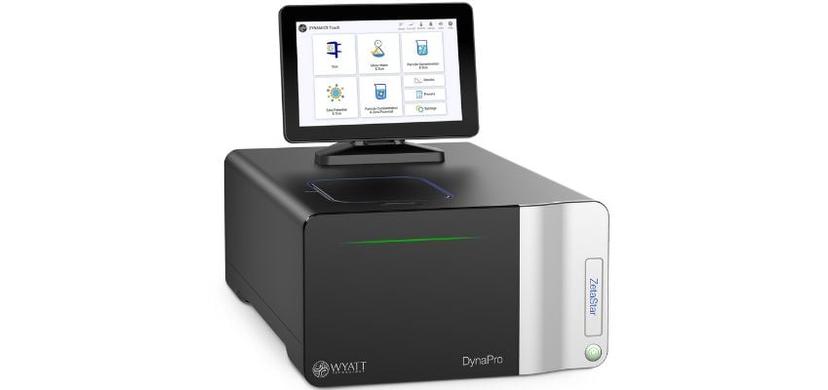Technological advancements fuel reliable nanoparticle characterization
Specialists explore the importance of effective and dependable product characterization in the development and formulation of nanoparticles
8 May 2024

As the field of medicine advances, optimizing the development of complex products becomes a growing challenge. While scientists work to develop and optimize novel therapy formulations, they often require comprehensive characterization of the particles and macromolecules involved. This characterization is essential for maximizing product effectiveness and guaranteeing the safety of patients.
Richard Chung, Product Manager and Dr. Colette Quinn, Director of Marketing and Strategy at Wyatt Technology, share valuable insights into the world of physiochemistry. Chung and Quinn focus on the challenges associated with accurately and quickly characterizing complex particles and molecules, while highlighting the latest innovations that are set to enhance research and development efficiency in this field.
The importance of getting the product attributes ‘just right’
Delving deeper into the key characteristics that play a key role in identifying, assessing the condition of, and maintaining the stability of a therapy, Quinn shares, “For medical therapeutic products, there is a ‘Goldilocks’ requirement for size – particularly so in the case of nano-delivery particles like lipid nanoparticles.” Quinn continues, “optimal size is a critical feature. For example, if a molecule is too small, phagocytes will quickly remove it from the body, but if a molecule is too large (i.e., >1000 nm), parental delivery of the therapy is no longer an option for the patient.” Another critical parameter to ensure that it sits in the ‘just right’ area is relating to charge. An uncharged or a neutral molecule might be able to pass through biological membranes more easily, but this can come at the cost of molecule instability, due to the tendency to self-associate. Although charged particles are advantageous in preventing aggregation, an excess of charge can lead to a decrease in the molecule's transfection efficiency.
To maintain these critical characteristics within the optimal range for a therapy, product characterization is an essential step in the field of medicine development. This includes the thorough assessment and fine-tuning of attributes like size and charge, often referred to as the zeta potential. Such characterization and optimization have become standard procedures in the development of a wide range of therapies, including gene therapies, vaccines, lipid nanoparticles, metal nanoparticles, and complex proteins.

An image to showcase the DynaPro™ZetaStar™ instrument by Wyatt Technology
Tackling today's product characterization complexities
Parameters, such as zeta potential, have historically been challenging to characterize, especially in the context of lipid nanoparticles. Due to the interplay between size and charge parameters for enhancing nanoparticle efficacy, the product development process necessitates the screening of multiple formulations. This can be a demanding and time-consuming task. A key obstacle in the path of measuring zeta potential is that the cuvette-based systems currently in common use restrict the overall speed and efficiency of measurements, as Chung explains.
“Another major challenge that scientists face when measuring zeta potential with the instrumentation available is the ability to obtain reliable results in high salt or formulation buffers,” says Chung. “The presence of salt ions creates shielding effects, necessitating higher electric fields for measurements. As a result, the sample often gets ruined from bubble formation (due to electrolysis) or sample degradation and the electrodes themselves can get destroyed as well.” To overcome this hurdle, a user then must dilute their sample anywhere from 10x to 1000x, which raises questions on the applicability of the resulting value to the product in its native state.
Quinn adds, “Moreover, many other systems struggle with high ionic strength solutions. This poses a significant limitation when studying how a molecule might interact in the body as high salt conditions reflect natural physiological conditions.” Plus, scientists are mindful of the challenge associated with adopting a new technique. Typically, expertise in operating a specific instrument is limited to just one or two individuals, and continually training new staff can represent a substantial investment in terms of both time and resources.
An optimized instrument for reliable, user-friendly measurements
In response to the prevailing challenges encountered by scientists in zeta potential characterization, Wyatt™ Technologies team (a portfolio of Waters™ Corporation) has introduced the state-of-the-art DynaPro™ ZetaStar™ instrument, designed to address these issues. “The ZetaStar combines the techniques of dynamic light scattering (DLS), electrophoretic light scattering (ELS) and static light scattering (SLS) all in one platform,” shares Quinn. “This enables the user to measure the size, polydispersity (size distribution), particle concentration, molecular weight, thermal stability, zeta potential (charge), and turbidity. Essentially, from the top down, this one instrument helps measure the developability of a compound.”
Powered by its state-of-the-art, unique optical design, the ZetaStar enables simultaneous dynamic and electrophoretic light scattering measurements. Chung says, “This capability cuts measurement time in half and provides real-time monitoring throughout the run, expediting formulation screenings.” The ZetaStar’s optical and cell design combination enables sample pressurization, eliminating the impact of electrolysis while using lower electric fields to maintain sample integrity. This innovation ensures reliable measurements. Measurements can also be automated, eliminating the need for scientists to handle each measurement individually. This not only saves time, but also reduces the risk of human error, while significantly increasing throughput.
The instrument's guided interface simplifies data generation, making it easier for researchers to adapt to the technology. “The user-friendly touch screen interface makes it accessible to a broader range of scientists, reducing the dependency on a limited number of instrument experts,” notes Chung. “Brand new users with little to no experience can begin collecting data immediately or connect the instrument to their computer for advanced method development. Moreover, users that have access to a Waters Autosampler and pump can also connect their instrument for automated measurements of zeta potential and size.”
Lastly, the ZetaStar’s affordability enables extensive sampling, rapid data acquisition, and early method optimization. In conclusion, Quinn states, “Scientists no longer need to make anticipations or estimations about a nanoparticle's performance; they now have the data to precisely understand its capabilities and limitations.”
By lowering the barrier to entry, and making measurements more accessible and reliable, instruments like the ZetaStar empower researchers to explore new avenues of study. By gaining insights on elusive characteristics, such as zeta potential, scientists can obtain a deeper understanding of their products to enable informed and early decision-making in the research and development process.
